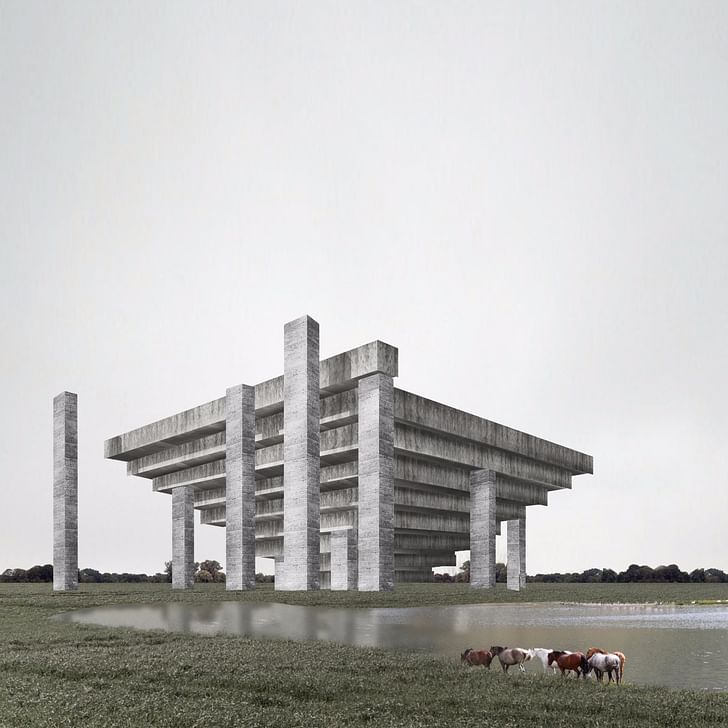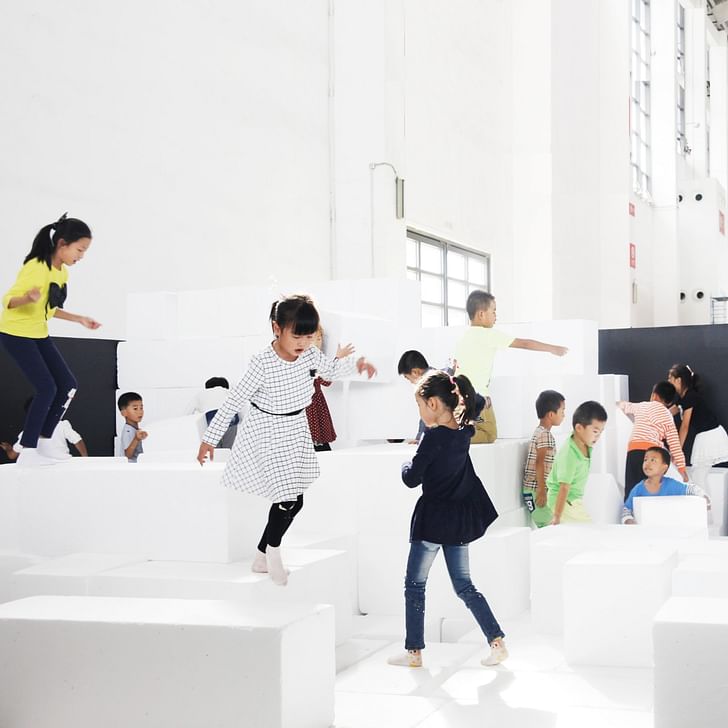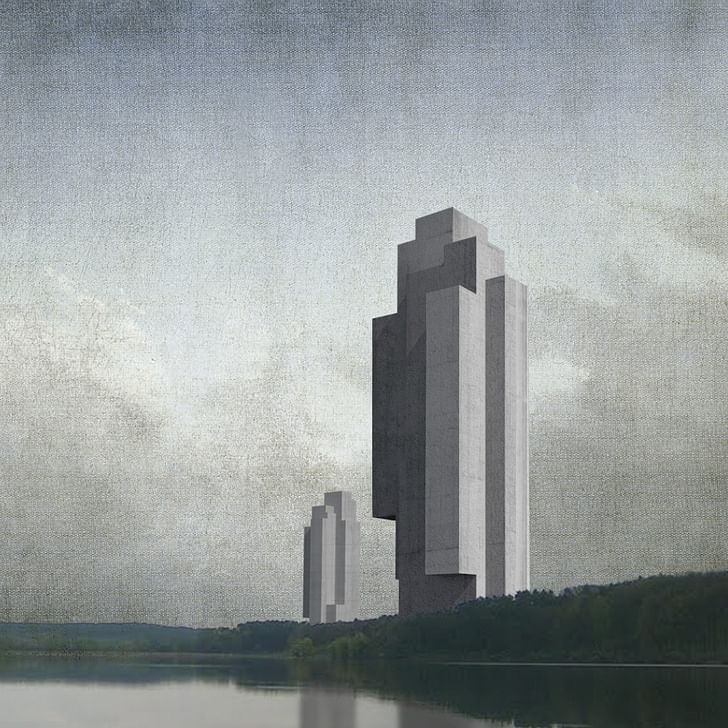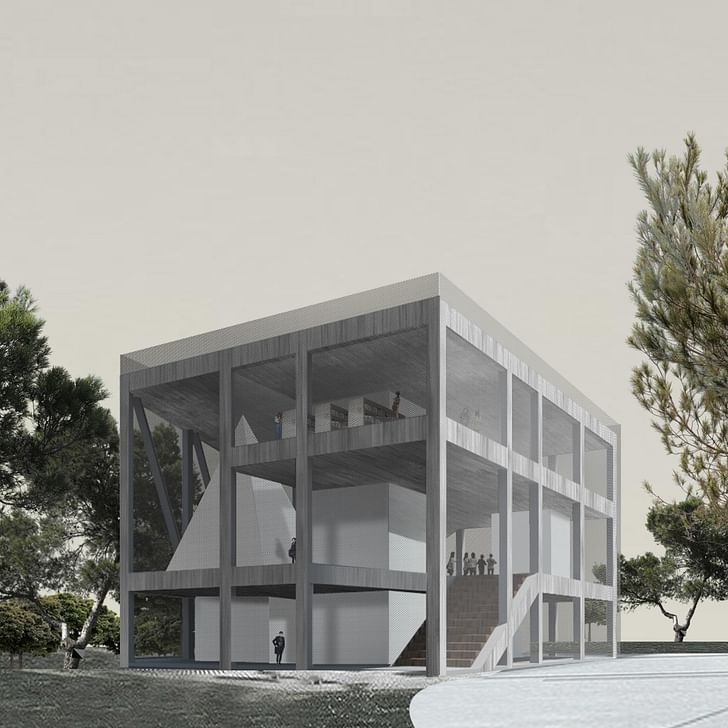

Books, magazines, film, animations, installations, exhibitions and curatorial programs, teaching and workshops, performance, buildings and more. Today we are talking with WAI Architectural Think Tank, a practice started in 2008 by Nathalie Frankowski and Cruz Garcia that approaches architecture from a variety of mediums and expressions.
How did the two of you come together?
Some months after graduating from architecture school at the Universidad de Puerto Rico (Cruz) and Paris La Villette (Nathalie, after following her undergraduate studies at the Architecture School in St-Etienne) both of us moved to Brussels for our first post-school experience in an architecture practice. It was in 2008, only a few weeks before the bankruptcy of Lehman Brothers. In a matter of days, markets around the world were waving white flags, and architecture studios were preparing for the worst. Big studios were laying off employees by the masses, closing some of their satellite studios; small offices were struggling just to stay open. In a short period of time, we had to work on several international and local competitions. The pessimism in the air, mixed with the deep feeling of uncertainty, made it clear for us that we were in need for a more critical form of architecture. We took it as an allegorical anti-climax; to be released into the world, so to speak, in a moment when the relationship between free market capitalism and architecture seemed detrimental.
In November that year, we wrote and published WAI’s manifesto.

Why were you originally motivated to start your own practice? And how has your practice evolved since its founding?
Our interests in diverse spheres like film, art, politics, literature, mixed with a deep sense of disappointment with the state of architecture, made us realize quite early that creating our own practice was the most meaningful way to pursue an architecture able to reflect our values and concerns.
Since its beginning, WAI (an acronym for What About It?) has been a concept in which questioning takes center stage
Our architectural approach is also informed by the history of the struggles of the avant-garde or other movements that were willing to put everything at risk in order to challenge the ways of thinking and of understanding the world. The years of the ‘surfer riding the waves’ of opportunism were symptomatic of a bigger condition that started corroding architecture decades ago, and it wasn’t until the latest burst on the market bubble that its vanity and exuberance were made obvious. Since its beginning, WAI (an acronym for What About It?) has been a concept in which questioning takes center stage and projects evolve from a critical life philosophy. In our short life as architects, from the foundation of WAI Think Tank in 2008, to the years we spent in Beijing from 2009 to 2017, to our new teaching commitments in the U.S.with the Visiting Teaching Fellowship at the School of Architecture at Taliesin and the Hyde Chair of Excellence at the University of Nebraska-Lincoln, we constantly strive to search for distinctive ways with which to communicate architectural ideas, push architectural discourse further and produce meaningful architecture.
Originally we started working with texts, collages, buildings; now our repertoire has expanded to include books and magazines, film and animations, installations, exhibitions and curatorial programs, teaching and workshops, performances and interviews. In the meantime, other questions have been addressed through parallel platforms like Intelligentsia Gallery, a space for the production and diffusion of ideas in the realm of contemporary art we founded in Beijing in 2014, and Garcia Frankowski, our own art collective through which we explore ideas about language, representation, symbolism and their political and historical imperatives.
With the passing of the years, we have added more tools to our array, trying to keep pushing and blurring boundaries, while allowing a more diverse set of ideas, mediums and strategies to influence our production and ways to see the world.

Your work could be characterized as experimental, in that it often takes the form of text, images, publications, exhibitions, etc. What do you see as the value of this mode of practice? And do you think you could continue working this way if you were to expand?
Ludwig Wittgenstein’s aphorism "the limits of my language, means the limits of my world" plays a key role in our approach to architecture. Every strategy, instrument, medium, and tool of communication and representation has its inherent potential and limitations. We aim with every project, exhibition, film, collage, image, performance, curatorial project, building, space, book, and exhibition design, to create a medium that can carry a particular or a series of ideas that wouldn’t be delivered as powerfully in any other way.
[WAI] is a deliberate effort to continue building on the legacy of a time when architects were not solely relegated to respond to a professional service but when they assumed their full role as artists
WAI Think Tank is a deliberate effort to continue building on the legacy of a time when architects were not solely relegated to respond to a professional service but when they assumed their full role as artists, planners, strategists, public intellectuals, writers, authors, designers of buildings and furniture, of toys and children’s books, of cities and new worlds. This pluralistic way of working creates connections with the history of each medium and opens up new possibilities by expanding and blurring the limits of architecture. We hope that this strategy carries on with time while remaining flexible in any operation or at any scale.

What hurdles have you come across?
In The Man Without Qualities Robert Musil describes the struggle of a subject not willing to compromise his values in a world where compartmentalized knowledge and its utilitarian applications take command. Not only we identify with the challenge of the so-called "sublime flights" of humanity above the expectations and constraints of the contemporary identified in the book, but we see this struggle of utopian dimensions as part of the search for a more free, interconnected, universal world that have put so many transcendental architectural and artistic movements at odds with power structures responding to old world orders and stagnant hierarchies.
The project of universalism—a project we work with, study and try to learn from—requires a lot of hard work and a deep faith in its plausibility, and it’s unfortunately constantly threatened by opportunistic political setbacks as one can attest especially looking at recent world events.

You have a market-frenzy that drives banal architecture to scales that one wonders if they should exist at all, with no vision nor thinking behind it
Pursuing this Universalist agenda, or this architecture ‘without qualities’ (since it doesn’t respond to momentary trends or try to justify its existence with market value, standards, awards and rankings) from a city like Beijing has been both enriching and extremely challenging. On one side you have a market-frenzy that drives banal architecture to scales that one wonders if they should exist at all, with no vision nor thinking behind it—this architecture occupies most of the physical context and infiltrates even the spaces for discourse and knowledge. On the other side, looking at and communicating with the rest of the world becomes problematic since the internet as we know it is mostly blocked. Information can be hard to acquire and new mediums of communication that usually we would take for granted, like social media and email accounts could be very difficult to operate if they work at all.
While the city provides its own possibilities, our work and international makeup has ideologically isolated us from the usual denominations used to categorize architectural production. Not being Asian, nor solely European, American, Latin-American has reinforced our belief in a world post-national boundaries, but at the same time has limited the ways in which we can relate to hierarchical structures and organizations of serious gravitas that refuse to let these (old) ideological structures go.
Challenged every step along the way, our dream has been kept alive by devising our own platforms for knowledge and discussion, and thanks to institutions and people (sometimes under difficult circumstances) that have enabled our teaching, workshops, publications, exhibitions and competitions to travel the world and be engaged in interesting exchanges.

Is scaling up a goal or would you like to maintain the size of your practice?
Our goal is to make significant contributions to the collective intelligence of architecture, and we will aim to achieve that by using every tool, platform and strategy available. Each project we have developed has found its own medium and with it its own group of contributors, ranging from consultants or collaborating designers when in the process of designing a building, to curators and artists when in the creation of curatorial and/or exhibition projects, to editors, poets and writers for publications, to the public, dancers, or choreographers for performing events, to children for our children installations and workshops, etc.
We don’t think of our practice as a partnership in the corporate sense of the word, but rather as a flexible system for collaborations, constructing and structuring knowledge, ideas, concepts and projects, and more importantly, constantly open to ask questions.

What are the benefits of having your own practice? And staying small?
Flexibility and freedom are two main concepts we are not willing to compromise. That and having control of your means of production, while maintaining an environment where you can continuously learn, question, communicate, exchange, experiment, and take risks.
Interested in finding out more about WAI Architecture Think Tank? Take a listen to our interview with the duo from Next Up: The Chicago Architecture Biennial here:
1 Featured Comment
This is the kind of practice I'd like to be running in the next year or two.
All 2 Comments
YOUR WORK IS BOTH EXCITING AND PROFOUND
This is the kind of practice I'd like to be running in the next year or two.
Block this user
Are you sure you want to block this user and hide all related comments throughout the site?
Archinect
This is your first comment on Archinect. Your comment will be visible once approved.